
Artifact
Browse an alphabetical list of artifacts from the Holocaust and World War II. Each object tells a story about the history and demonstrates human experiences during the time period.
<< Previous | Displaying results 201-210 of 231 for "Artifact" | Next >>
-
Souvenir stamp book
ArtifactA souvenir stamp book that belonged to a Jewish refugee. The book contains multicolored stamps inscribed with dates and place names. May 1941, Kobe, Japan. [From the USHMM special exhibition Flight and Rescue.]

-
St. Louis photo album
ArtifactPhoto album containing photographs taken by a passenger aboard the St. Louis, with a depiction of the ship on the cover. In 1939, this German ocean liner carried Jewish refugees seeking temporary refuge in Cuba. It was forced to return to Europe after Cuba refused to allow the refugees entry into the country.

-
Stamps
ArtifactA special issue of Serbian stamps bearing antisemitic and anti-Masonic themes dating from the German occupation. The series was issued for an exhibition on Jews and Freemasons in Belgrade in 1942.
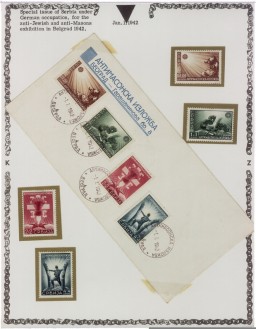
-
Stroop Report cover
ArtifactSS Major General Juergen Stroop, commander of German forces that suppressed the Warsaw ghetto uprising, compiled an album of photographs and other materials. This album, later known as "The Stroop Report," was introduced as evidence at the International Military Tribunal at Nuremberg. Here, its cover is marked with an IMT evidence stamp.
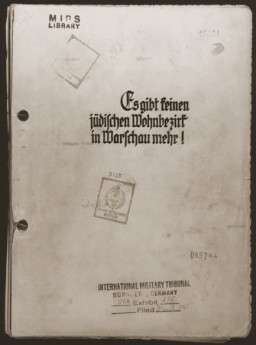
-
Suitcase belonging to a Polish Jewish refugee (exterior)
ArtifactA few Polish Jewish refugees left Japan to join a small Jewish community in Harbin, Manchuria, in Japanese-occupied China. One of them carried this suitcase, covered with stickers from various shipping firms and hotels, on the journey to Harbin. China, 1940-1941. [From the USHMM special exhibition Flight and Rescue.]
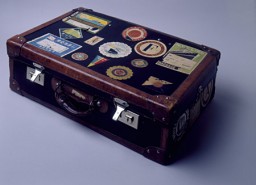
-
Suitcase belonging to a Polish-Jewish refugee
ArtifactA small group of Jewish refugees left Japan to join a small Jewish community in Harbin, Manchuria, in Japanese-occupied China. This image shows the interior of a leather suitcase carried by one of them to Harbin, China, 1940-1941. [From the USHMM special exhibition Flight and Rescue.]
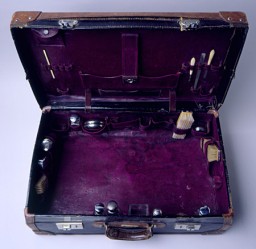
-
Teddy bear carried by a child on a Kindertransport
ArtifactTeddy bear belonging to Jack Hellman as a child. He carried it with him when he left for England from Germany on a Kindertransport in early 1939.

-
The Times, August 17, 1921
ArtifactIn this London Times article, reporter Philip Graves compared passages from Maurice Joly’s Dialogue in Hell Between Machiavelli and Montesquieu (1864) side-by-side with the Protocols of the Elders of Zion in order to prove that the Protocols was plagiarized. Other investigations revealed that one chapter of a Prussian novel, Hermann Goedsche’s Biarritz (1868), also “inspired” the Protocols. Times (London), August 17, 1921.

-
The Times, August 17, 1921
ArtifactIn this London Times article, reporter Philip Graves compared passages from Maurice Joly’s Dialogue in Hell Between Machiavelli and Montesquieu (1864) side-by-side with the Protocols of the Elders of Zion in order to prove that the Protocols was plagiarized. Other investigations revealed that one chapter of a Prussian novel, Hermann Goedsche’s Biarritz (1868), also “inspired” the Protocols. Times (London), August 17, 1921.
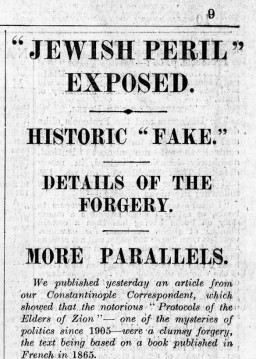
-
The Times, August 17, 1921
ArtifactIn this London Times article, reporter Philip Graves compared passages from Maurice Joly’s Dialogue in Hell Between Machiavelli and Montesquieu (1864) side-by-side with the Protocols of the Elders of Zion in order to prove that the Protocols was plagiarized. Other investigations revealed that one chapter of a Prussian novel, Hermann Goedsche’s Biarritz (1868), also “inspired” the Protocols. Times (London), August 17, 1921.
